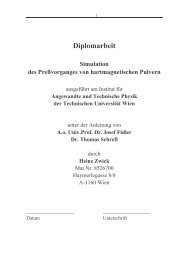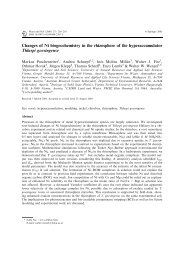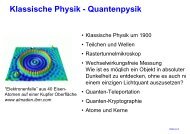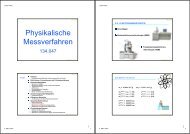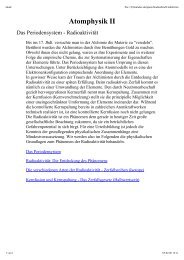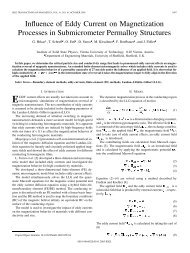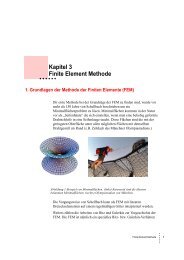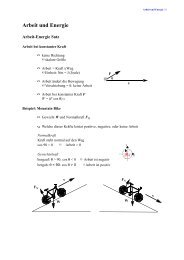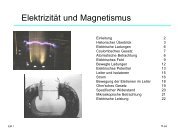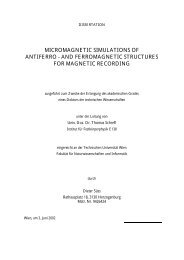Read Back Signals in Magnetic Recording - Research Group Fidler
Read Back Signals in Magnetic Recording - Research Group Fidler
Read Back Signals in Magnetic Recording - Research Group Fidler
You also want an ePaper? Increase the reach of your titles
YUMPU automatically turns print PDFs into web optimized ePapers that Google loves.
Numerical Methods<br />
Integration of Ampere’s law gives for the radial field<br />
H<br />
( )<br />
⎧ ρ<br />
⎪<br />
j : 0≤ρ<<br />
r<br />
⎪ 2<br />
. (4.64)<br />
ϕ ρ =⎨ 2<br />
⎪<br />
r<br />
j : r ≤ρ<br />
⎪⎩ 2ρ<br />
This function is plotted <strong>in</strong> Figure 4.3, and shows a l<strong>in</strong>ear <strong>in</strong>crease, reach<strong>in</strong>g its maximum at<br />
the wire’s surface and decl<strong>in</strong>es proportional to 1/ρ outside.<br />
H ϕ [A/m]<br />
0.10<br />
0.08<br />
0.06<br />
0.04<br />
0.02<br />
0.00<br />
0<br />
0 10 20 30 40 50<br />
ρ [mm]<br />
Figure 4.3: Hϕ for an <strong>in</strong>f<strong>in</strong>ite long wire is plotted over the distance from the middle axis.<br />
The second curve shows the error of the numerical calculation.<br />
The second curve <strong>in</strong> Figure 4.3 shows the relative error of the FEM calculation compared to<br />
(4.64). The error is negative and <strong>in</strong>creases accord<strong>in</strong>g to amount with <strong>in</strong>creas<strong>in</strong>g ρ . The model<br />
with f<strong>in</strong>ite length used for the FEM calculation is the reason for that. The f<strong>in</strong>ite length has a<br />
greater effect for larger radial distances. The discont<strong>in</strong>uities of the error curve are due to the<br />
Adaptive Cross-Approximation Technique (see Section 4.3). For small ρ we have a very<br />
good match of the numerical and analytical calculated fields.<br />
4.4.7 Example: Coil<br />
A coil as shown <strong>in</strong> Figure 4.4 is the second example. For the coil wire we have aga<strong>in</strong> the same<br />
7 -1 -1<br />
parameters as for the straight wire ( σ= 5.961⋅10 Ω m , I = 1 mA , r = 2 mm ). The radius<br />
of the coil is r′ = 20 mm , the length is l = 100 mm , and it has N = 20 w<strong>in</strong>d<strong>in</strong>gs. The model<br />
additionally has two straight leads with lengthl L = 80 mm . Similar to the straight wire we can<br />
now calculate the difference of the electric potential by analytical means:<br />
-10<br />
-8<br />
-6<br />
-4<br />
-2<br />
Error [%]<br />
55



